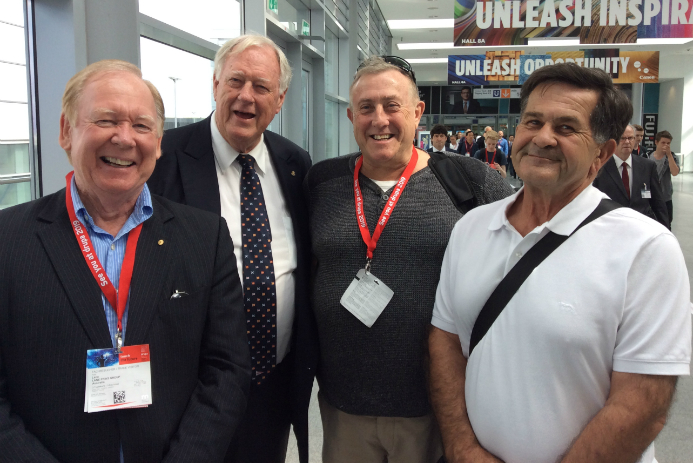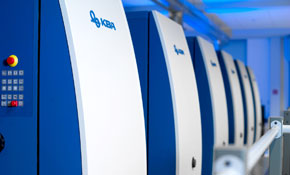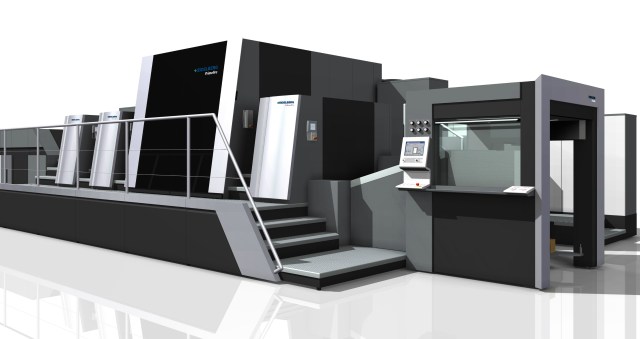
Inkjet printing has arrived on the global stage as a mainstream print production process, with drupa 2016 playing host to a plethora of new solutions.
Actually the term inkjet is a bit of a misnomer, as it is now being used in a generic sense to include virtually all types of non-toner digital printing.
This includes the liquid toner used by HP on its Indigo presses – housed on the biggest stand on the show, dwarfing all others at 6200sqm – including all its new presses.
Liquid toner is also the technology that Xeikon is using on its new Trillium inkjet web-fed press range, and by Ryobi MHI (RMGT) on its B2 digital sheetfed press DP7, that it claims will run three times faster than anyone else’s at 8000sph, and on any stock.
It also includes the nanographic technology from Benny Landa, who is in danger of moving into enigma mode.
First shown at drupa four years and promised to be on stream by now, Landa’s nano technology in some ways is no closer. Beta testing is at least 12 months away, maybe more.
He has orders, including one from CMYKhub, and 20 for Vistaprint parent Cimpress, but no product as yet, despite having 500 scientists beavering away on nano in Israel.
[Related: All the news from drupa 2016]
The toner king Xerox is now into inkjet printing, with a B3 cutsheet printer the Brenva and a webfed printer the Trivor. Toner rival Canon is also in B3 cutsheet with its i300 printer, and showed a four-colour B2 inkjet printer which it aims to release next year.
Ricoh already has inkjet with its high volume webfed VC60000, while Konica Minolta has launched its B2 inkjet AccuriJet, which is branded by Komori as the Impremia 29.
Then there is the whole bunch of folding carton inkjet presses launched at this show, with EFI’s Nozomi pumping outs 75 metres a minute B1 sheetfed, the Heidelberg/Fujifilm B1 Primefire, the B1 Landa S10 – although a caveat is on that – the Screen BHS inkjet corrugators, the KBA/Xerox VariJet 106, and the Konica Minolta B1 folding carton printer, due out end of next year.
And of course there are the existing high speed inkjet web systems from Kodak, Ricoh, Canon Oce, Screen, HP and KBA, which are all now well established technologies, most of which have already found a home in Australian businesses.
Should the printers of Vogue be quaking in their boots? Well no, with few exceptions inkjet / liquid toner / nano printers at drupa have not yet reached the heights of offset quality. For many applications though they are easily good enough; books, direct mail, transactional, transpromo and catalogues are all sectors that inkjet could handle, and for leaflets, flyers pamphlets the technology is up the job.
Almost a quarter of a century after its launch, digital printing is only responsible for a miniscule three per cent the global print output, but at drupa 2016 you could be forgiven for thinking it is 97 per cent. It is that gap – and other segments such as folding carton – that is causing the technology developers to spend hundreds of millions of dollars between them in developing new systems.
Comment below to have your say on this story.
If you have a news story or tip-off, get in touch at editorial@sprinter.com.au.
Sign up to the Sprinter newsletter


